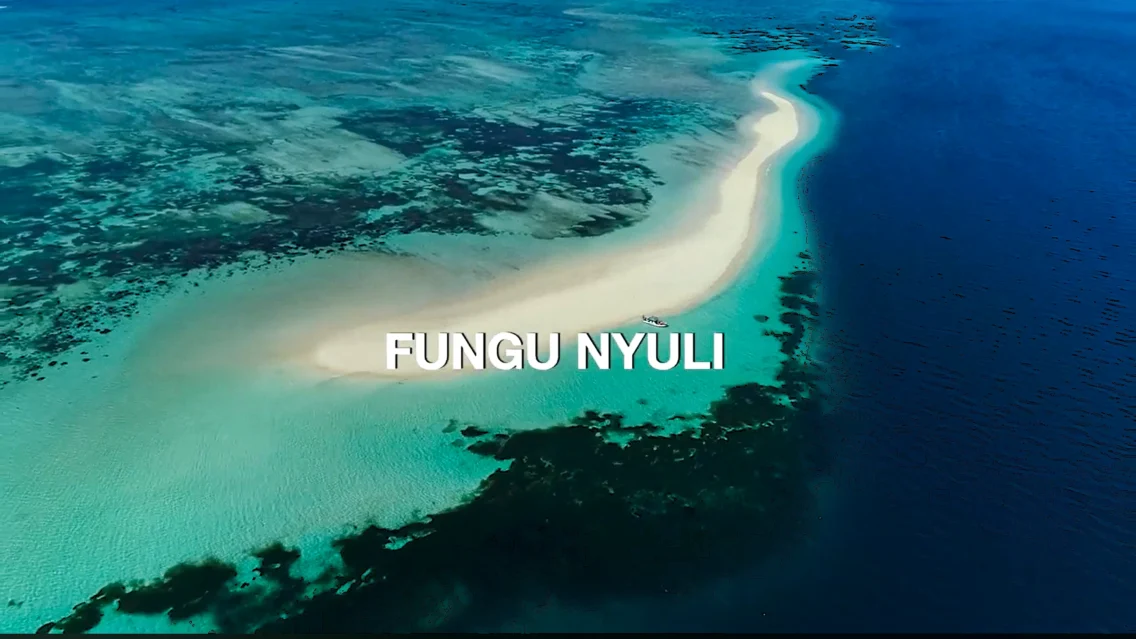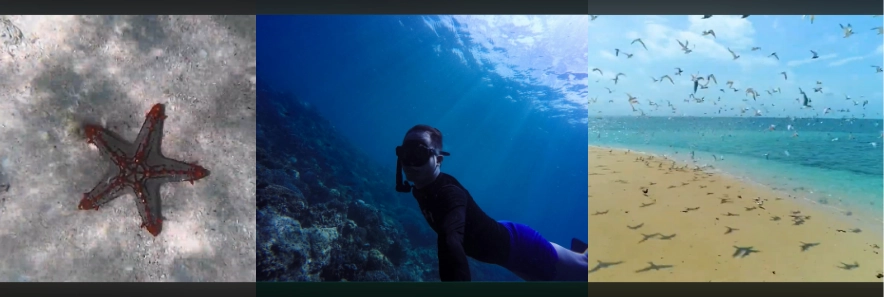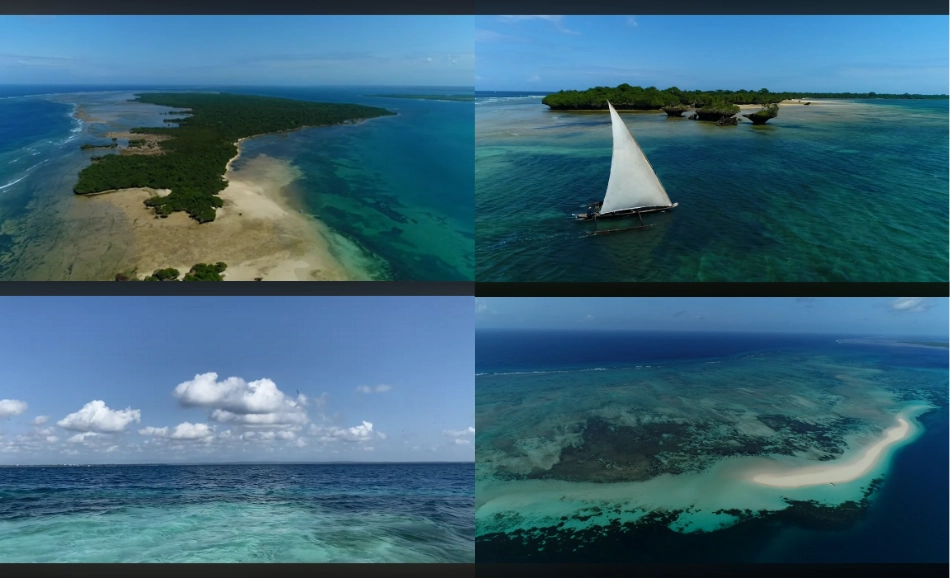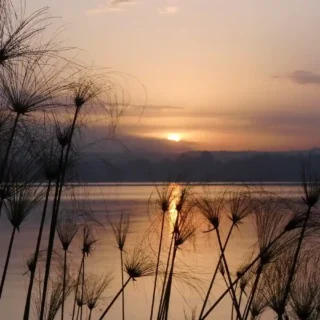Fungu Nyuli: The Disappearing Island Between Beauty & Grief

Three years ago, my office organized a staff retreat in Tanga, a serene coastal city where Tanzania and Kenya almost meet. It’s a place kissed by the warm waters of the Indian Ocean, hugging East Africa’s coast, about forty minutes from Mombasa by road. Tanga doesn’t boast loudly like Zanzibar or Dar es Salaam; it whispers. It’s quiet, graceful, and layered with stories, the kind of place that seems to breathe differently.
When we first arrived, I remember the air, thick with salt and sunlight, and the way the ocean looked like melted turquoise. We were told the next day would be a special one, a visit to an island that disappears. They called it Fungu Nyuli, or as the locals say, the disappearing island. The mystery around it made it sound almost mythical, as if it were a secret the ocean only revealed to those who woke early enough to find it.
Not much has been written about Fungu Nyuli. You’ll find barely a handful of words about this disappearing paradise on the internet. You’re lucky to be taken through its raw, unfiltered beauty by someone who has witnessed it firsthand; this story is more than a travel blog, it’s your guide to feel, imagine, and get ready to experience one of the world’s most undiscovered gems.
The Morning of Wonder
That morning, our alarms went off before dawn. At 6 a.m., we were already at breakfast, still sleepy, but full of excitement. We packed everything we could think of: fruits, snacks, soft drinks, sunscreen, a small tent for shade, swimwear, a speaker, a football, and games. The hotel staff kept reminding us, “You must leave early; the island disappears by afternoon”. We laughed, not quite understanding what that meant. How can an island disappear?
By 7 a.m., we were walking toward the dock. The ocean shimmered, the sun already stretching its golden arms across the horizon. There were a few armed Officers at the harbor, standing beside other travelers. Their uniforms caught the morning light. Curious, we asked our guide who they were. “They guard the border,” he said. “From illegal crossings and suspicious boats. This ocean hides more than beauty”.
Their eyes followed us as we boarded. They checked our paperwork carefully, something about permits and identification. We handed over our documents and waited. The silence felt heavier than it should have for a morning so beautiful. Finally, they waved us through. I didn’t know then that the story of those guards would tie so painfully to what I was about to learn.
(For context: this coastline sits within the coastal system of the Tanga region, which is part of a network of marine parks and reserves recognized for their coral, seagrass, and sandbank features. The area is managed with conservation in mind, and local operators often coordinate small excursions to nearby sandbanks and reserve areas.)

Across the warm Indian Ocean
Our motorboat roared to life, splitting the sea in silver streaks. The early wind was cool and soft, and the waves danced playfully around us. We laughed, sang, and took photos as the shoreline behind us shrank into a blur of green and gold. Someone began telling jokes, and another started humming a song we all knew. For a moment, it felt like freedom had a color, and it was blue.
The Indian Ocean around Tanga is unlike any other. It’s not just water, it’s alive. The farther you go, the more you feel its pulse. Fishermen in small wooden boats waved at us as we passed. Some carried nets glistening with the morning catch. Seabirds flew low, dipping into the waves, and the air smelled of salt, coconut oil, and life itself.
Then, as the laughter settled, our boat driver, a tall man with a sun-worn face, began to speak. He turned to me suddenly and asked, “Are you Somali or Ethiopian?”
“Ethiopian,” I replied, smiling.
He nodded slowly. “Then let me tell you about the sad fate of your young people”.
His words carried a weight I didn’t expect. The laughter faded as everyone grew quiet. He told us about the illegal migrants, mostly Ethiopians and Eritreans, who brave this same ocean on fragile wooden boats, hoping to reach Tanzania and eventually South Africa. They pay brokers who promise them safe passage. But those promises, he said, often end in tragedy.
“These brokers,” he explained, “bring them to Fungu Nyuli, the island you’re going to, and tell them they can walk from there to the mainland. They say the land connects all the way to the border. But by the time they start walking, the sea returns. The island disappears. And they disappear with it.”
I stared at him, speechless. I thought about how hard it had been for me to get my own visa, how I had to apply online and pay a $50 application fee through a friend abroad because Ethiopia didn’t have international payment access then. It wasn’t easy, but it was possible. I suddenly understood why so many couldn’t follow that path, why they trusted strangers who sold them dreams across dangerous waters.

The Island That Wakes and Sleeps
Around 9 a.m., we saw it, a faint golden stretch emerging from the ocean like a dream. From afar, it looked unreal, a sliver of sand floating in blue. As we got closer, Fungu Nyuli Island revealed itself fully, a wide, flat island made of soft white sand and seashells, surrounded by crystal-clear water. The sunlight sparkled across its surface like scattered diamonds. It was breathtaking.
We anchored near the shallow end and jumped off, laughing as our feet sank into the cool sand. Meanwhile, the water around us was shallow and warm, so clear you could see tiny fish darting by. Someone shouted, “It’s like walking on water!” and truly, it felt that way.
Before exploring further, we needed to secure the boat. The boatman warned us that the tide could change quickly. So, together, we dug a deep hole into the sand, burying the anchor and tying it tightly to a large rock. It felt strange, almost ceremonial, as if we were trying to hold time still. Then, the fun began.
We played football first, barefoot on the sand, laughing every time someone slipped. The ball kept rolling toward the water, and chasing it felt like running into the horizon. After that, we played volleyball, using our tent poles as a makeshift net. Every serve came with a burst of laughter, every dive coated us in sun and salt.
When the sun grew stronger, we built our tent, a small patch of shade in a world of gold and blue. We lay under it, eating fruits: juicy mangoes, bananas, and slices of watermelon. Someone brought a portable speaker, and music filled the air; soft, rhythmic, blending with the ocean’s hum. Time felt slower there.
We swam, floated, and took turns walking to the farthest point of the sandbank where the sea began to deepen. The island felt endless, though we knew it wasn’t. Every few minutes, a cool breeze would brush against our faces, carrying with it the scent of salt and freedom.

The name “Fungu Nyuli”: a small explanation
A note about the name: fungu is a coastal Swahili term commonly used to refer to reef-sandbanks, landscape elements that appear at low tide and vanish at high tide. That’s why many coastal sandbars in Tanzania and Kenya are called fungu, followed by a local descriptor (a name, an animal, or an event).
The second part of the island’s name, Nyuli, appears to be a local place-name; sources differ on the precise etymology in oral traditions, and not all small coastal names have a recorded, definitive origin in formal histories. In practice, the combined term describes the sandbank feature that appears and disappears with the tide.
Things to See and Do
For travelers, Fungu Nyuli is paradise reborn every morning. You can snorkel near the coral edges and watch colorful fish glide past your feet. The water is shallow for long stretches, perfect for swimming or paddle games. Some visitors bring kayaks or paddleboards, while others, like us, bring food and set up small beach picnics.
If you walk far enough, you’ll find patches of seashells and coral fragments, and occasionally starfish lying quietly in the sun. The place feels untouched, no resorts, no vendors, just nature’s perfection and the sound of waves. You can collect shells, meditate, take photos, or simply lie down and let the ocean tell you its story.
But Fungu Nyuli’s beauty is also fragile. Locals say it “sleeps” under the ocean by afternoon. By 3 p.m., the tide begins its return, slow at first, then suddenly fierce.

When the Sea returned
By around 2:30, the boatman called out, “Time to go! The water is coming.” We looked around. The ocean had begun to shimmer differently. The horizon that looked calm an hour ago now had movement; small waves rolling in, inch by inch, reclaiming the sand.
We hurried to pack everything: the tent, the food, the bags. Some people still wanted to take a few last pictures. The water reached our ankles, then our knees. It was time to go.
As we pushed the boat back into the water, I looked behind me, and the island was already shrinking. The same stretch of golden sand that had looked infinite was now disappearing beneath the rising tide. It was mesmerizing and terrifying all at once.
The ride back was rough. The motorboat shook violently, cutting through angry waves. Water splashed into our faces. We held tightly to the boat’s edges, trying not to fall. The driver’s focus was unshakable, his eyes fixed on the shifting horizon. I couldn’t stop thinking about what he had said earlier, about those who never made it back.
I imagined the faces of young men and women who, like us, might have started their journey full of hope, laughter, and belief. But instead of reaching safety, they found the sea rising around them, swallowing the land beneath their feet.
I closed my eyes as another wave hit us. Saltwater filled my mouth. My heart tightened.

The arrival back and after
After an hour of battling the waves, we finally saw Tanga’s coastline again, the familiar palm trees, the pastel houses, and the fishing boats resting on the shore. We were soaked, exhausted, but alive.
When I reached my hotel room, I felt strangely disconnected. Everyone else was talking about the day, the photos, the fun, the thrill of almost being caught by the sea. But I couldn’t shake off the heaviness. I lay on my bed, the sound of the waves still echoing in my ears, and thought of the countless lives the same sea had claimed.
I cried quietly. For the beauty of that island. For the cruelty of fate. and, for my people, young, brave, and desperate, who keep chasing hope across oceans that do not always love them back.
Practical Tips for Visitors
If you or someone you know wants to visit Fungu Nyuli (or other sandbank islands in the Tanga area), here are practical things to carry and keep in mind, drawn from both local guides’ advice and common-sense preparation for a tidal sandbank excursion:
- Tide timetable or ask a local operator: Check the tide schedule for Tanga before you go. Sandbanks are accessible at low tide windows; operators time-trip carefully to avoid being stranded or caught by rising water. Local tide tables and apps for Tanga give high/low tide hours.
- Waterproof bag / dry sacks: To protect phones, documents, and food.
- Sunscreen, hat, lightweight tent or sun shade: to help protect from the sun, which can be a little too much.
- Sturdy anchor rope and a digging tool: Many groups secure small boats by digging an anchor hole and burying lines to keep the ship in place during the day. This simple step can prevent the vessel from drifting as the tide returns. (We did this ourselves, along with our boat driver)
- Snorkel gear or water shoes: The water is shallow, and coral patches exist near the edges; shoes protect feet from coral scrapes.
- Plenty of drinking water and food: Shade and fresh drinking water are essential; salty sun makes you thirstier than you think.
- First aid kit, basic medicine: For small cuts or sunburn.
- Copies of ID/permits: Some marine parks or local authorities may request documentation, also have a soft copy or a picture on your phone. But don’t take original documents, you might lose them. Keep them in your safe box in your hotel.
- A local guide or licensed operator: They know the exact times and safest crossing windows, and they coordinate boats and permits when required. (The area around Tanga is often patrolled or monitored by official marine/reserve authorities.)
Reflections of the Tide
Even now, whenever I think of Fungu Nyuli, I remember it as a paradox, a paradise that both gives and takes. It’s breathtaking, yes, but it carries stories the waves will never confess aloud. The laughter we shared there was real, but so was the ache that followed.
Fungu Nyuli is not just a disappearing island. It’s a mirror, reflecting both the joy of life and the tragedy of human struggle. It reminds me that beauty and grief can exist in the same space, just like tides that come and go, erasing footprints but never memories.
And every time I see a map of East Africa, I trace my finger along the warm waters of the Indian Ocean, hugging the coast, and I whisper a silent prayer:
That one day, no one will have to risk their life in search of a better one.
FAQ
Why is it called the “disappearing island”?
Because Fungu Nyuli only appears during low tide, usually between 8–9 a.m., and vanishes by afternoon when the ocean swallows it back completely.
How can travelers visit Fungu Nyuli?
You can reach it by motorboat from Tanga city. It’s best to leave early in the morning (around 6–7 a.m.) and return before 2 p.m., as tides rise quickly.
What should I pack for a day at Fungu Nyuli?
Carry sunscreen, a hat, light snacks or fruit, plenty of water, swimwear, a tent, or umbrella for shade, and a waterproof bag for electronics.
Is it safe to visit Fungu Nyuli?
Yes, but visitors must go with a licensed boat operator who understands the tides. Avoid staying past 2 p.m., as the returning tide can be strong and unpredictable.
Are there any facilities on the island?
No, Fungu Nyuli is a natural sandbank with no permanent structures. Visitors must bring everything they need and leave no waste behind.
What makes Fungu Nyuli special?
Its untouched beauty, clear waters, and the surreal experience of standing on land that vanishes within hours make it one of Tanzania’s most undiscovered destinations.


